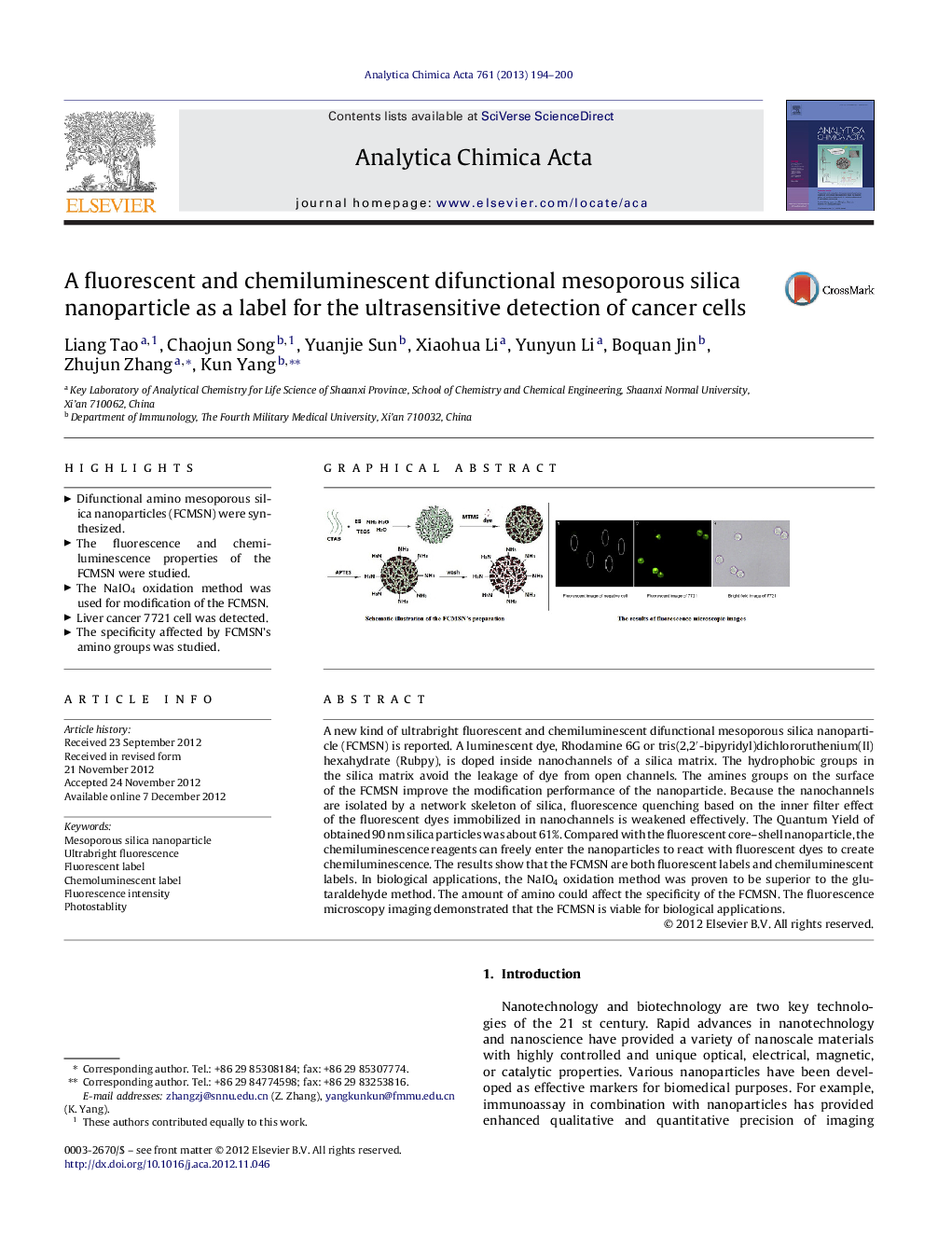| کد مقاله | کد نشریه | سال انتشار | مقاله انگلیسی | نسخه تمام متن |
|---|---|---|---|---|
| 1165189 | 1491071 | 2013 | 7 صفحه PDF | دانلود رایگان |

A new kind of ultrabright fluorescent and chemiluminescent difunctional mesoporous silica nanoparticle (FCMSN) is reported. A luminescent dye, Rhodamine 6G or tris(2,2′-bipyridyl)dichlororuthenium(II) hexahydrate (Rubpy), is doped inside nanochannels of a silica matrix. The hydrophobic groups in the silica matrix avoid the leakage of dye from open channels. The amines groups on the surface of the FCMSN improve the modification performance of the nanoparticle. Because the nanochannels are isolated by a network skeleton of silica, fluorescence quenching based on the inner filter effect of the fluorescent dyes immobilized in nanochannels is weakened effectively. The Quantum Yield of obtained 90 nm silica particles was about 61%. Compared with the fluorescent core–shell nanoparticle, the chemiluminescence reagents can freely enter the nanoparticles to react with fluorescent dyes to create chemiluminescence. The results show that the FCMSN are both fluorescent labels and chemiluminescent labels. In biological applications, the NaIO4 oxidation method was proven to be superior to the glutaraldehyde method. The amount of amino could affect the specificity of the FCMSN. The fluorescence microscopy imaging demonstrated that the FCMSN is viable for biological applications.
Figure optionsDownload as PowerPoint slideHighlights
► Difunctional amino mesoporous silica nanoparticles (FCMSN) were synthesized.
► The fluorescence and chemiluminescence properties of the FCMSN were studied.
► The NaIO4 oxidation method was used for modification of the FCMSN.
► Liver cancer 7721 cell was detected.
► The specificity affected by FCMSN's amino groups was studied.
Journal: Analytica Chimica Acta - Volume 761, 25 January 2013, Pages 194–200